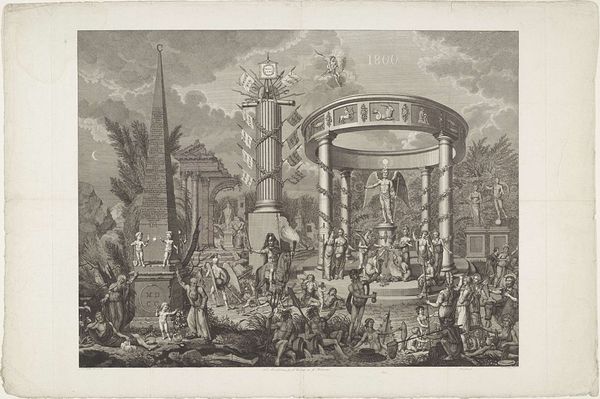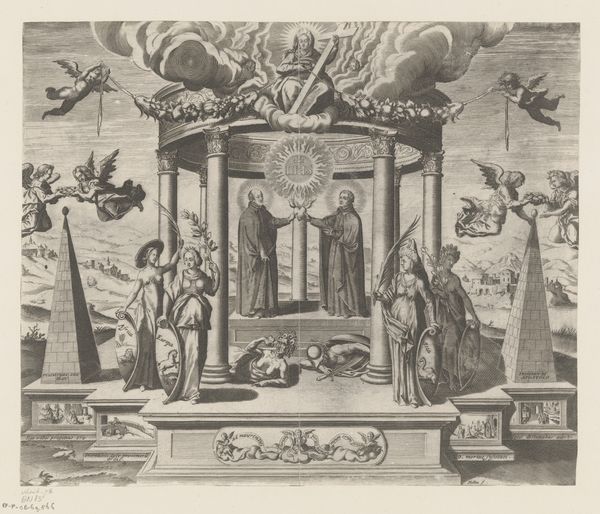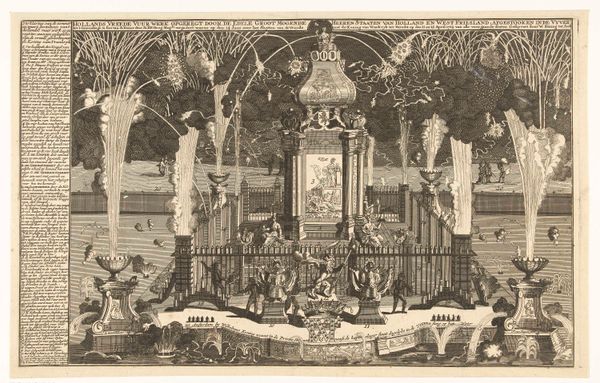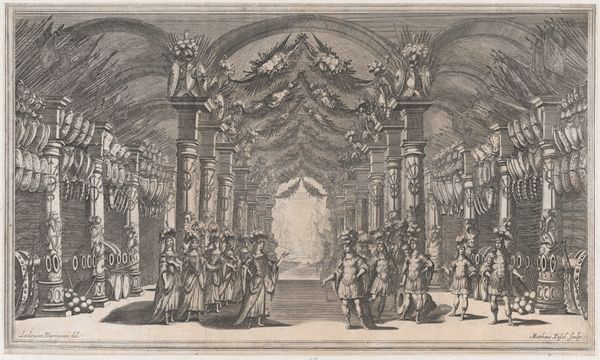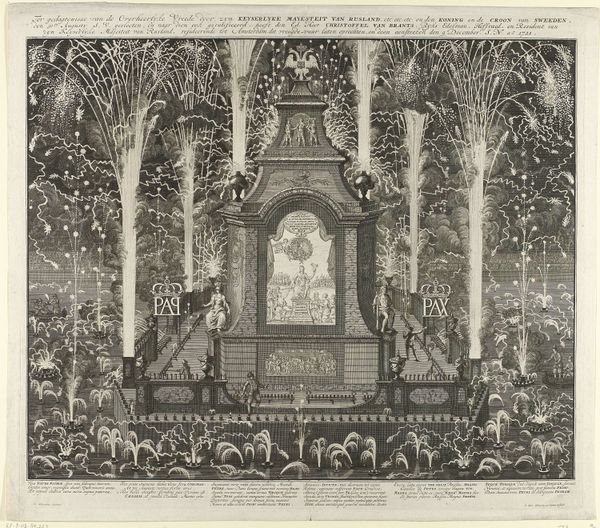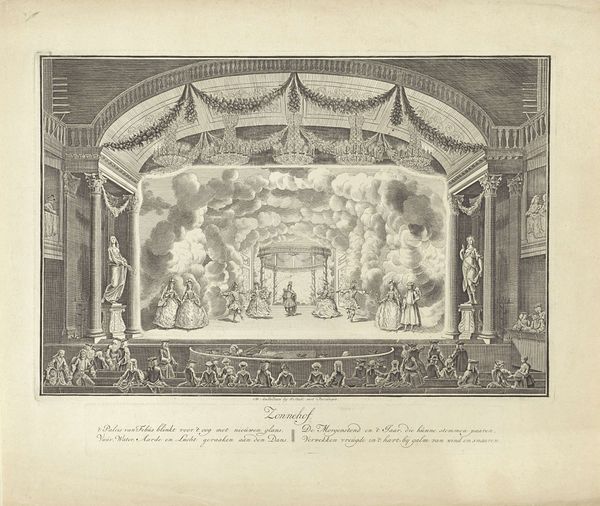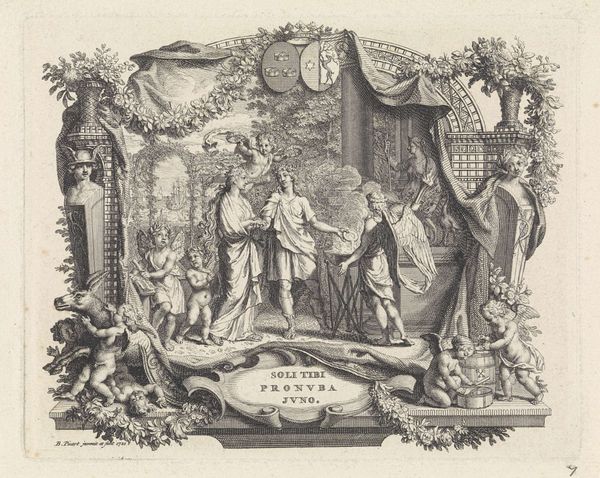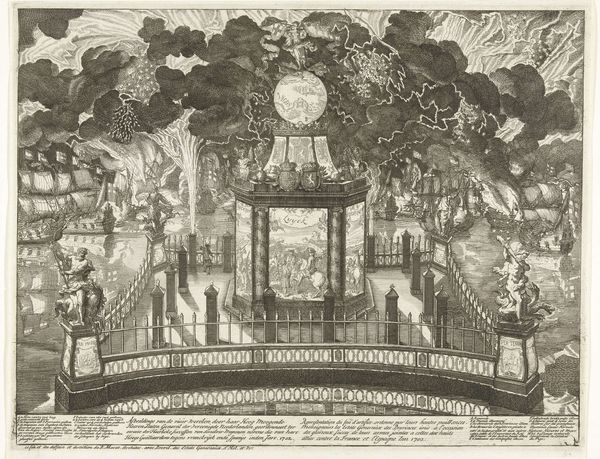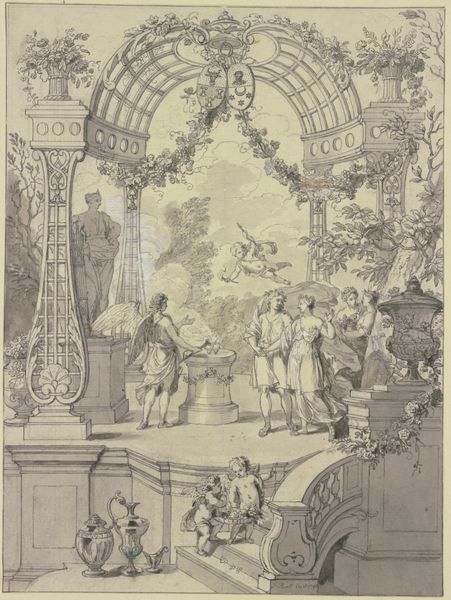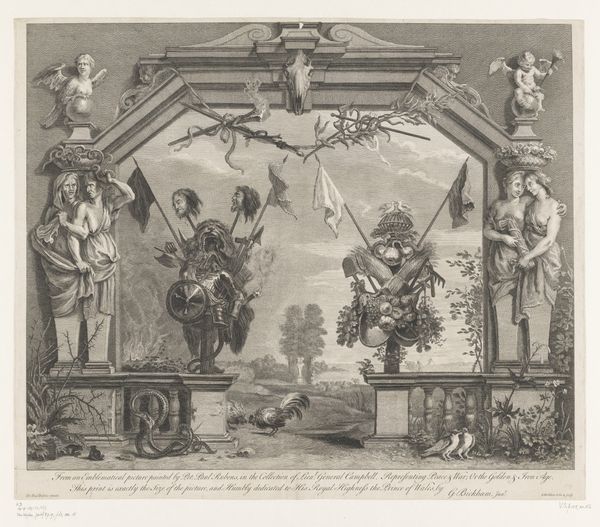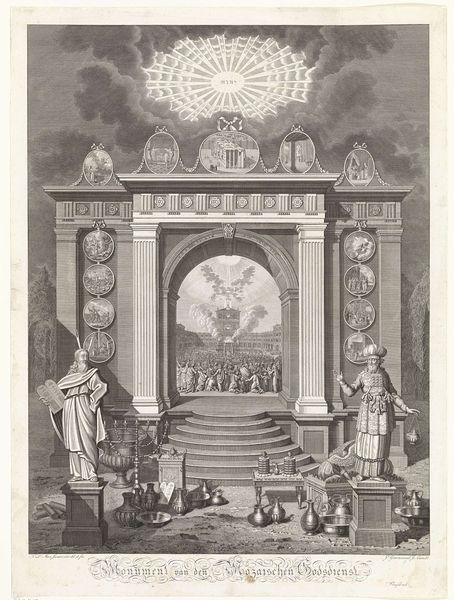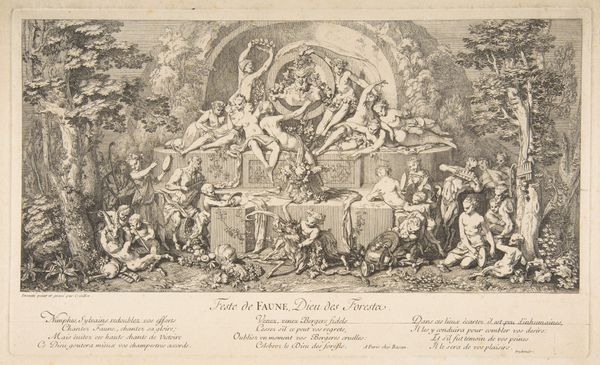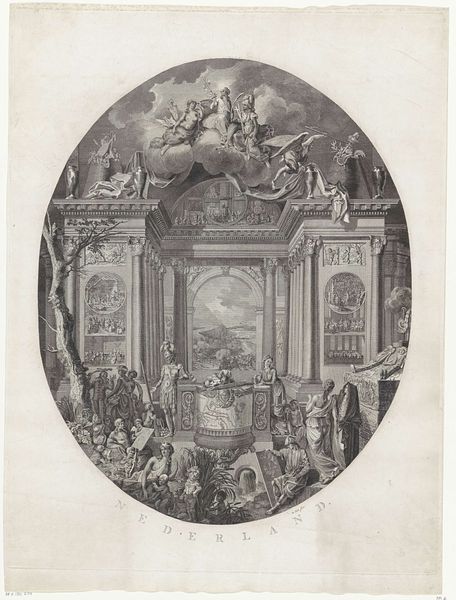
print, engraving
#
neoclacissism
#
allegory
#
pen drawing
# print
#
landscape
#
classical-realism
#
geometric
#
cityscape
#
history-painting
#
engraving
Dimensions: height 507 mm, width 655 mm
Copyright: Rijks Museum: Open Domain
Editor: This print, "Tempel van de Bataafse Vrijheid, 1795" by Jan Gerritsz. Visser, showcases a neoclassical temple amidst chaotic scenes. I’m struck by the stark contrast between the serene temple and the turmoil around it. How would you interpret this complex composition? Curator: Focusing on the formal arrangement, we observe a deliberate juxtaposition of order and disorder. The temple, a perfect geometric form, stands as a stable center amidst swirling figures. The use of linear perspective draws the eye toward this central structure. Note how Visser contrasts this clear structure with the tumultuous elements on either side of it. What does this juxtaposition communicate? Editor: It seems like the temple, this symbol of order and reason, is meant to stand apart from the chaos of revolutionary events happening around it. There’s such precision in the rendering of the architecture. Is there something else that is achieved by this very meticulous composition? Curator: Indeed. This idealized structure—rendered meticulously—employs classical architectural language: Doric columns, a symmetrical facade, and allegorical figures rendered with academic precision. By isolating and framing the Temple with chaos, Visser heightens its symbolic weight. Its placement isn’t arbitrary but intended to generate visual interest and reinforce symbolic meaning. Editor: So, even without knowing the specific historical context, we can understand something about the intent simply by studying the composition? Curator: Precisely. The artwork is, at its core, about the formal relationships of its components. Editor: It’s amazing how much can be gleaned just by looking closely at the arrangement of forms and the artist’s choices in representing them. Thank you! Curator: My pleasure. The ability to “read” an artwork through its intrinsic visual qualities opens doors to deeper appreciation and understanding.
Comments
No comments
Be the first to comment and join the conversation on the ultimate creative platform.
